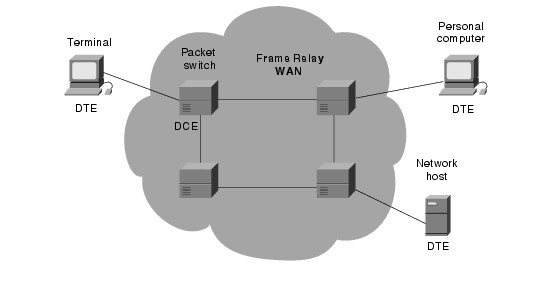100% Pass Cisco, PMP, ISACA, CompTIA, AWS Practice Dumps on SALE!
Get Now
Networking Basics: How Does Frame Relay Work?
 Frame Relay is considered to be a packet-switched technology that would be utilizing bridges, routers, or Frame-Relay access devices (FRADs). These devices would be aggregating and converting data into Frame-Relay packets at - 56kbps, FT1, T1 speeds. Before we discuss it further, you must check out the training courses at the SPOTO Club to obtain success in a single attempt.
Frame Relay is considered to be a packet-switched technology that would be utilizing bridges, routers, or Frame-Relay access devices (FRADs). These devices would be aggregating and converting data into Frame-Relay packets at - 56kbps, FT1, T1 speeds. Before we discuss it further, you must check out the training courses at the SPOTO Club to obtain success in a single attempt.
Frame Relay Technology
Today's LANs and computing equipment would have the potential to run at much higher speeds and transfer large quantities of data. With the complexity and diversity of today's networks, management could be a mammoth task if you wouldn't have the proper tools. Each environment is considered to be a unique combination of equipment from different vendors. Frame Relay, which would be a relatively new wide-area networking method, would be gaining in popularity. It utilizes a packet-switching technology, similar to X.25, but is considered to be more efficient. As a result, it could make your networking quicker, more straightforward, as well as less costly. Frame Relay would be developed to solve communication problems that other protocols couldn't: the increased need for higher speeds, increased demand for high bandwidth efficiency, particularly for clumping or "bursty" traffic, an increase in intelligent network devices that would process lower protocol, and the need to connect LANs as well as WANs. Like X.25, Frame Relay is considered to be the packet-switched protocol. But the Frame-Relay process would be streamlined. There would be significant differences that would be making Frame Relay a faster, more efficient form of networking. A Frame-Relay network doesn't perform error detection, which would be resulting in a considerably smaller amount of overhead as well as faster processing than X.25. Frame Relay is also considered to be the protocol independent-it accepts data from many different protocols. This data would be encapsulated by the Frame-Relay equipment, not the network.
The intelligent network devices would be connected to a Frame-Relay network are considered to be responsible for the error correction as well as frame formatting. Processing time would be minimized, so the transmission of data is done much faster and more efficient. Additionally, Frame Relay is believed to be entirely digital, reducing the chance of error and offering excellent transmission rates. Frame Relay would be typically operating at 56 kbps to 1.544 Mbps.
Like X.25, Frame Relay is considered to be the packet-switched protocol. But the Frame-Relay process would be streamlined. There would be significant differences that would be making Frame Relay a faster, more efficient form of networking. A Frame-Relay network doesn't perform error detection, which would be resulting in a considerably smaller amount of overhead as well as faster processing than X.25. Frame Relay is also considered to be the protocol independent-it accepts data from many different protocols. This data would be encapsulated by the Frame-Relay equipment, not the network.
The intelligent network devices would be connected to a Frame-Relay network are considered to be responsible for the error correction as well as frame formatting. Processing time would be minimized, so the transmission of data is done much faster and more efficient. Additionally, Frame Relay is believed to be entirely digital, reducing the chance of error and offering excellent transmission rates. Frame Relay would be typically operating at 56 kbps to 1.544 Mbps.
Why choose Frame Relay?
Since Frame Relay would have low overhead, it is considered a perfect fit for today's complex networks. You could gain several clear benefits: First, multiple logical connections could be sent over a single physical connection, reducing your costs of internetworking. By reducing the amount of processing required, you get improved performance as well as response time. And because Frame Relay would be utilizing a simple link layer protocol, your equipment usually would be requiring only software changes or simple hardware modifications, so you wouldn't have to invest a lot of money for upgrading your system. Since Frame Relay is considered to be a protocol that would be independent, it could process traffic from different networking protocols such as IP, IPX, and SNA. Frame Relay is believed to be an ideal choice for connecting Wide Area Networks (WANs) that would have unpredictable, high-volume, as well as bursty traffic. Frame Relay would also be offering advantages for interconnecting WANs. In the past, setting up WANs would require the utilization of private lines or circuit switching over a leased line. Single, dedicated lines aren't needed for making each WAN-to-WAN connection with Frame Relay, reducing costs. Now, if you wish to acquire more knowledge, you should opt for the training courses offered at the SPOTO Club.